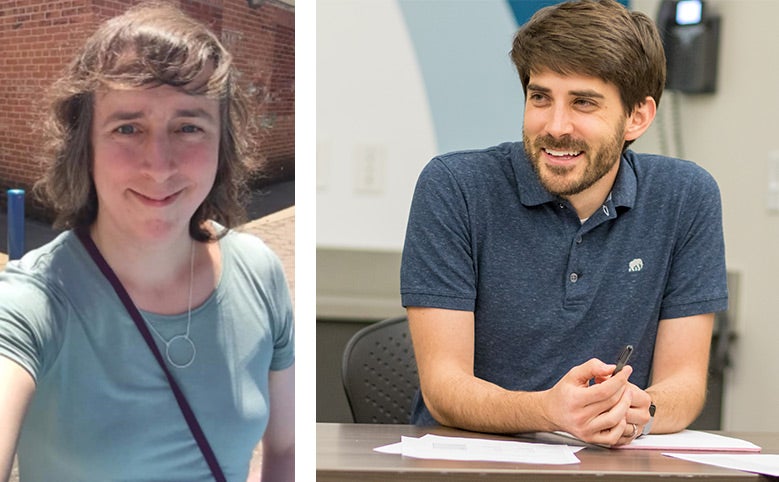Two years ago, we embarked on our Building Audiences for Sustainability (BAS) Stories Series, which has chronicled early accounts from the BAS initiative. One of the organizations featured was Denver Center for the Performing Arts (DCPA), focusing on Off-Center—an experimental branch of DCPA’s Theatre Company. Off-Center is helmed and curated by Charlie Miller, who also serves as the Associate Artistic Director of Denver Center Theatre Company.
To see how the work has been progressing, Corinna Schulenburg, Director of Communications at Theatre Communications Group, sat down with Miller to discuss Off-Center’s work to date, what they’ve learned and recommendations for other organizations seeking to expand their work in audience building.
This following is an excerpted and edited version of the exchange.
Schulenburg: Can you provide a brief overview of the Denver Center and your work with the Building Audiences for Sustainability initiative?
Miller: The Denver Center for the Performing Arts is a nonprofit theater based in Denver, and it's a unique organization because it houses both the Broadway presenting house and the regional theater that we call the Theatre Company. Inside the Theatre Company, there's a line of programming that I lead called Off-Center, which was created in 2010 to be a theatrical testing center, a place where we could experiment with new ideas and new forms and new ways of engaging a new and younger audience.
This really came out of the challenge we were facing a decade ago—subscriptions were declining and audiences were aging. There was more competition for entertainment dollars, so we had to find a new way to engage an audience who wasn’t necessarily predisposed to theater the way that their parents and grandparents were. We were determined to create a new kind of programming geared toward that audience and that’s where Off-Center came from.
Around the same time, I became really fascinated with immersive theater and the way that it put the audience at the center of the experience. I also felt like it was a great thing for Denver because people who come to Colorado enjoy experiences. They like being active, and immersive theater allows an audience to be active inside of a story. So we set out to build the DCPA’s capacity to produce large scale immersive work through Off-Center.

Schulenburg: Can you say a little bit more about the aesthetic and the audience experience of immersive theater?
Miller: For me what immersive means—and I also often use the word “experiential” interchangeably—is that it puts the audience at the center. They have some kind of role in the experience or in the story. It doesn't mean that the audience is playing a part like the actor, but instead that there is no fourth wall. It also needs to engage your senses and often involves not being seated the whole time, sometimes moving through multiple spaces, sometimes moving through the real world, but within a story that serves as a lens through which you’re viewing the world.
Schulenburg: I know that an initial impulse was around engaging millennial audiences, particularly because you are a millennial yourself. Do you feel that millennial audience members have a particular relationship to this kind of work?
Miller: On average we’ve seen 35 percent of the audience is made up of millennials for these experiential productions, which is a departure from the Theatre Company, which is closer to 16 percent. We've also noticed that there is a halo effect, where you create programming that you think will speak to one generation and it becomes compelling to other generations. The common denominator is not your age, it’s how adventurous you are and what you’re looking for in your cultural experience.
What’s exciting to us is that the work we’re doing is engaging a significantly newer and younger audience but it’s also engaging a diverse audience and people of all ages who are interested in engaging with their art in a different way.
Also through the work we’ve been doing, I've continued to feel a tension in artistic programming between listening to what the audience wants and just doing interesting work that people will be excited about that they didn't know they want. There’s the famous Henry Ford quote that I love, something like, “If I listened to what people wanted I would have just given them a faster horse.”
Schulenburg: I remember in some of your past work you’ve uncovered that there’s a gap in what they think they want and what you actually found they wanted through market research.
Miller: As we were starting our Wallace-funded work we did a lot of market research, both qualitative and quantitative, to look at millennials in Denver and to understand if they would be interested in immersive theater. And when we asked them what type of experience, what attributes they wanted in an experience, they wanted “entertaining,” “lighthearted and fun,” “casual and relaxed.” They did not want “exclusive,” “serious” or “high end.”
Sweet & Lucky, which was the first big project we produced, was serious and emotional and contemplative and people loved it, but it was the opposite of what they said they wanted. And it turns out that some of the subsequent work we've done that has been categorized as “entertaining, lighthearted and fun” has not been as popular among audiences. So even though they said they thought they knew what they wanted, it turns out they didn't.
Schulenburg: Since Wallace released the Building Audiences for Sustainability Story on your work, what has changed since then? What have you been up to?
Miller: The production that is running right now is called Between Us, and it is a trio of one-on-one experiences between one actor and one audience member. This was inspired, in part, by an observation from Sweet & Lucky: during that production, every audience member received a brief one-on-one with an actor, and we saw how impactful that was for audience members.
Through all our projects this spring I've been fascinated with how much agency we can give the audience. How do we create a situation where the audience can show up as themselves, not have to play a part, but can have a meaningful and authentic impact on the direction and possibly even the outcome of the story? And how do we do that in a way that still guarantees that there's satisfying narrative arc? We're really experimenting with that in all of these pieces. We've had to rethink how we do things and learn along the way.
Schulenburg: Do you have any advice for smaller organizations looking to begin the work of audience building?
Miller: I think it's really important to get feedback from your audience. You don’t have to have a big budget to collect information and to use that to inform some of your decisions. It’s a skill set and a muscle that you can develop, and there are free tools out there to help. I believe that audience members have more buy-in with an organization if they feel like they’re able to share their opinion, so I’m a big proponent of continuous learning—as Wallace calls it—and using data to support strategy.
Another thing we've learned is that experimental and nonlinear work has been least successful, as determined by audience response. We’ve heard that loud and clear on three different projects now. I always have to remind myself that at the core you have to provide a good story and that’s what brings people in. Theater is an art of storytelling.
Finally, I’m a huge proponent of prototyping and taking small, incremental steps to improve based on what you learn. The analogy I like to give is climbing up two feet and trying out your parachute and then climbing up another two feet, rather than just jumping off a cliff and hoping that the parachute opens. The more you can iterate, prototype and experiment, that can be really valuable. It’s a way to take calculated risks.
Schulenburg: We’ve been talking a lot about the role human contact plays in the work you do at Off-Center, so I wanted to end by mentioning the New York Times article, "Human Contact Is Now A Luxury Good" – have you seen it?
Miller: Oh yes, I did see this piece.
Schulenburg: The research suggests that it used to be that people who had resources and money had access to screens. Now, it's reversed—folks who are economically distressed have screens around them all the time and human contact has become a luxury good for the wealthy. What’s so interesting to me about the work that you are doing, it feels like it's connected to that, that you are hitting on the significance of direct human contact. It seems to me like you're tapping into a real wellspring of hunger.
Miller: I think you're right there. This relates to why I think millennials are drawn to immersive work. Our lives are mediated through screens, and theater like this forces you to put your screen down and to just be real, present and embodied.
Spending an hour with a stranger and just getting to know them is a unique experience; you put yourself in someone else’s shoes and see the world from a different point of view. My hope is that this can wake us up from the monotony of our everyday routine and give us a new perspective on our own lives and on the world. That’s what we’re really trying to do at the end of the day. That’s what theater can do best.




